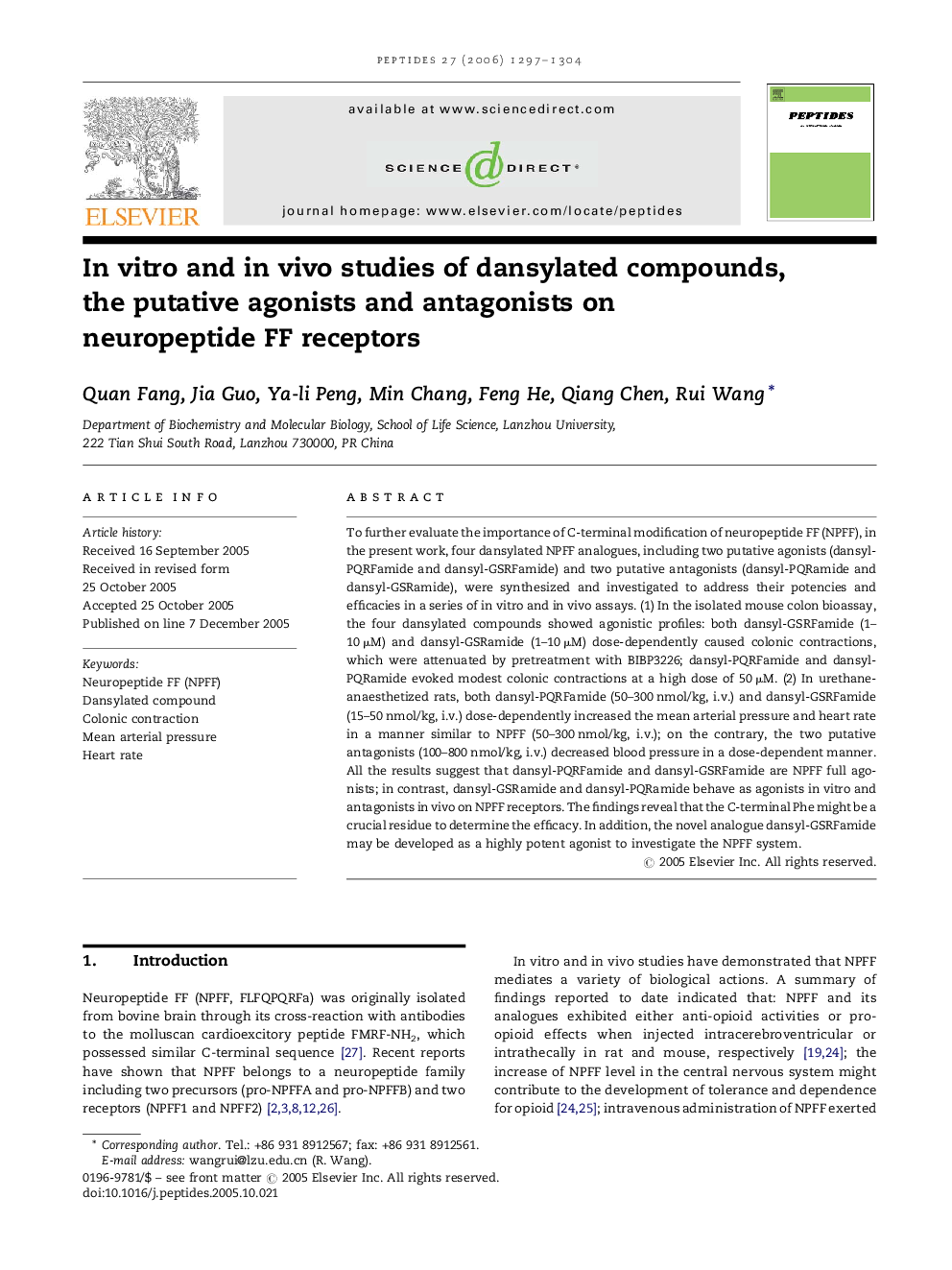| Article ID | Journal | Published Year | Pages | File Type |
|---|---|---|---|---|
| 2008607 | Peptides | 2006 | 8 Pages |
To further evaluate the importance of C-terminal modification of neuropeptide FF (NPFF), in the present work, four dansylated NPFF analogues, including two putative agonists (dansyl-PQRFamide and dansyl-GSRFamide) and two putative antagonists (dansyl-PQRamide and dansyl-GSRamide), were synthesized and investigated to address their potencies and efficacies in a series of in vitro and in vivo assays. (1) In the isolated mouse colon bioassay, the four dansylated compounds showed agonistic profiles: both dansyl-GSRFamide (1–10 μM) and dansyl-GSRamide (1–10 μM) dose-dependently caused colonic contractions, which were attenuated by pretreatment with BIBP3226; dansyl-PQRFamide and dansyl-PQRamide evoked modest colonic contractions at a high dose of 50 μM. (2) In urethane-anaesthetized rats, both dansyl-PQRFamide (50–300 nmol/kg, i.v.) and dansyl-GSRFamide (15–50 nmol/kg, i.v.) dose-dependently increased the mean arterial pressure and heart rate in a manner similar to NPFF (50–300 nmol/kg, i.v.); on the contrary, the two putative antagonists (100–800 nmol/kg, i.v.) decreased blood pressure in a dose-dependent manner. All the results suggest that dansyl-PQRFamide and dansyl-GSRFamide are NPFF full agonists; in contrast, dansyl-GSRamide and dansyl-PQRamide behave as agonists in vitro and antagonists in vivo on NPFF receptors. The findings reveal that the C-terminal Phe might be a crucial residue to determine the efficacy. In addition, the novel analogue dansyl-GSRFamide may be developed as a highly potent agonist to investigate the NPFF system.
